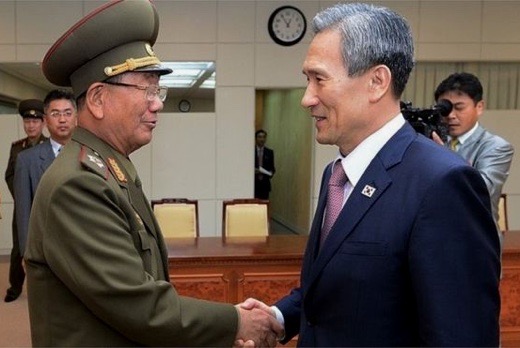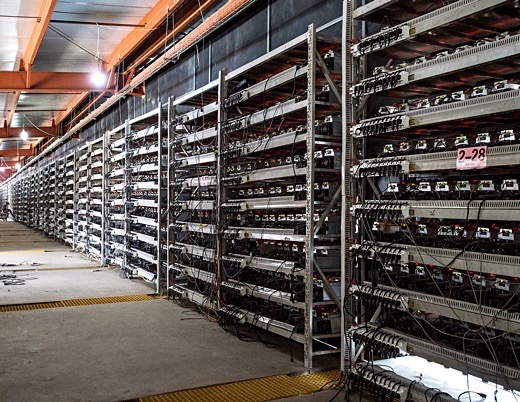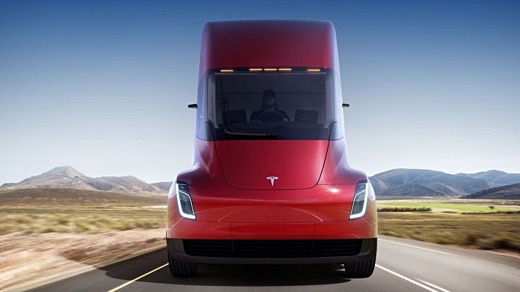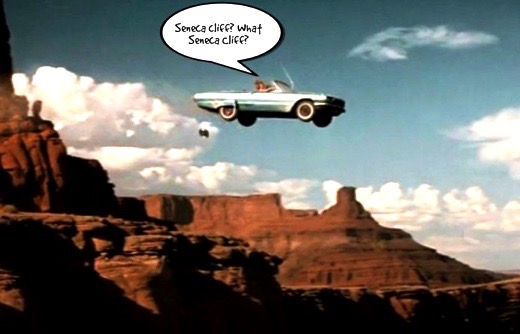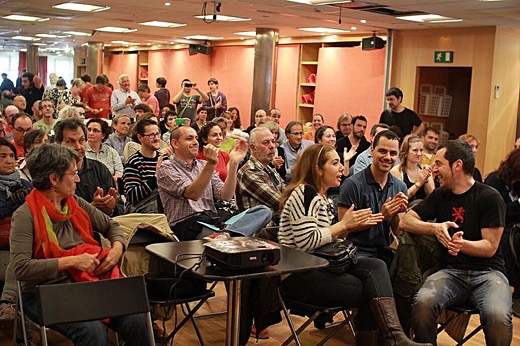SUBHEAD: If the region still has a window for peaceful adaptation, it is small and quickly narrowing.
By Richard Heinberg on 17 November 2017 for the Post Carbon Institute -
(
http://www.postcarbon.org/saudis-and-trump-gambling-bigly/)
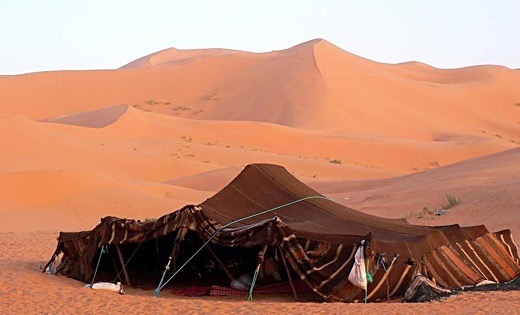 Image above: Forget about Neom an the 2030 Vision. This is a Bedouin tent in the desert of Saudi Arabia. In their migratory rounds, the Bedouins needed shelter that was both portable and reliable in a variety of conditions - cool in the day, warm at night and dry Under the rain. Without oil this is the way to live in Saudi Arabia. From (https://74fdc.wordpress.com/2012/03/30/the-bedouin-tent-cool-in-the-day-warm-at-night-and-dry-under-the-rain/).
Image above: Forget about Neom an the 2030 Vision. This is a Bedouin tent in the desert of Saudi Arabia. In their migratory rounds, the Bedouins needed shelter that was both portable and reliable in a variety of conditions - cool in the day, warm at night and dry Under the rain. Without oil this is the way to live in Saudi Arabia. From (https://74fdc.wordpress.com/2012/03/30/the-bedouin-tent-cool-in-the-day-warm-at-night-and-dry-under-the-rain/).
""My grandfather rode a camel, my father rode a camel, I drive a Mercedes, my son drives a Land Rover ” –
Rashid bin Saeed Al Maktoum, first Prime Minister of United Arab Emirates
Try this simple mental exercise. Imagine a hypothetical Middle Eastern monarchy in which:
- Virtually all wealth comes from the extraction and sale of depleting, non-renewable, climate changing petroleum;
- Domestic oil consumption is rising rapidly, which means that, as long as this trend continues and overall oil production doesn’t rise to compensate, the country’s net oil exports are destined to decline year by year;
- The state has a history of supporting a radical version of Sunni Islam, but the people who live near its oilfields are mostly Shiite Muslims;
- Power and income have been shared by direct descendants of the royal founder of the state for the past 80 years, but the thousands of princes on the take don’t always get along well;
- Many of the princes have expatriated the wealth of the country overseas;
- Population is growing at well over two percent annually (doubling in size every 30 years), and, as a result, 70 percent of the country is under age 30 with increasing numbers in need of a job;
- Roughly 30 percent of the population consists of immigrants—many of whom are treated terribly—who have been brought into the country to perform labor that nationals don’t want to do;
- A sizeable portion of the nation’s enormous wealth has been spent on elaborate weapons systems and on fighting foreign wars;
- A powerful Shia Muslim nation located just a couple of hundred miles away has gained geopolitical advantage in recent years; and,
- For the past three years oil prices have been too low to enable the kingdom to meet its obligations, so it has rapidly been spending down its cash reserves.
Now, ask yourself: What could possibly go wrong here?
We are, of course, discussing Saudi Arabia, which has been much in the news lately. This essay will review recent events centered therein and probe their significance.
As we will see, the main actors in the drama are an ambitious young Saudi prince, the Trump administration (and its own ambitious young prince), Iran, and Israel (which has a hand in just about everything of significance that happens in the Middle East)—with Lebanon, Qatar, and Yemen as possible staging grounds for the unfolding of further action.
As we will also see, regional stability is likely now in peril to a greater degree than at any time since the U.S. invasion of Iraq.
MbS Rules
Most of the current hubbub in Saudi Arabia revolves around 32-year-old Crown Prince Mohammad bin Salman (sometimes referred to as MbS), who was elevated to his current status as heir apparent to the throne in June 2017. MbS appears to be a forward-thinking young Saudi who wants to reduce his country’s official support for the extreme branch of Sunni Islam known as Wahhabism.
He has lobbied for regulations restricting the powers of the religious police and advocated for the removal of the ban on women drivers. MbS’s moderate stance is widely popular among Saudi youth.
Bin Salman has also put forward a plan called “
Saudi Vision 2030,” which aims to reform the Saudi economy, privatize Saudi Aramco (the government-owned oil company), reduce corruption, develop renewable energy and other non-petroleum revenue streams, and pursue sustainable development.
The plan includes setting up a $2 trillion megafund for a transition to the post-oil era. This policy is, again, widely approved by younger Saudis.
Though MbS appears to be the new de facto ruler of Saudi Arabia, his official title since 2015 has been Minister of Defense. In that capacity he has overseen Saudi’s deepening involvement in the war in neighboring Yemen, where rebel Houthis (who follow Shia Islam) gained control of the government in 2014-2015.
The Saudi intervention has killed thousands of civilians, prompting accusations of war crimes. Earlier this November, the Saudis blockaded Yemeni ports, severely exacerbating Yemen’s massive humanitarian crisis, with up to seven million facing
the imminent prospect of famine amid the
worst outbreak of cholera in history.
On November 13, Houthi rebels threatened to attack oil tankers and warships sailing under the Saudi coalition flag unless Riyadh lifted its blockade; the same day, the Saudi government pledged to open Yemeni ports. So far, the war has cost the Saudis tens of billions of dollars, yet has failed to dislodge the Houthis and their allies from the Yemeni capital.
In Syria, Saudi Arabia has been a main supplier of arms to various Sunni rebel groups (almost certainly including ISIS) since the start of that nation’s civil war. The secular Syrian President Bashar al-Assad has, for his part, received backing from Iran and Russia.
After 2015, when MbS rose to leadership of the Saudi Defense Ministry, Saudi support for the anti-Assad forces increased significantly. However, the rebels have not fared well: the Assad regime’s position today is far more secure than was the case even a year ago thanks to Russian intervention and the help of Iran/Hezbollah.
A third “accomplishment” of MbS as Minister of Defense has been to blockade the tiny neighboring nation of Qatar, for no apparent reason other than the fact that Qatar and Iran are on friendly terms. The two countries share access to the South Pars/North Dome natural gas field in the Persian Gulf, and as a result Qatar is the world’s top exporter of liquefied natural gas (LNG). Iran and Turkey both back Qatar in the dispute.
In May of this year, Donald Trump made his first foreign trip as president—to Saudi Arabia, where he was flattered with the pomp and circumstance that world leaders have learned are keys to his fragile ego. On that visit he met with MbS, Egypt’s military dictator, and officials of the United Arab Emirates. It was right after the visit that Saudi Arabia launched its campaign against Qatar—which Trump quickly endorsed.
To summarize perhaps too simplistically, MbS is an ambitious and visionary young man. But two big projects under his supervision as Minister of Defense have failed miserably, and a third seems to be going nowhere.
Gambling Spree Timeline
Now let’s recall the events of the past month that have garnered Mohammed bin Salman and the Saudis so many headlines:
October 27. President Trump’s son-in-law and Senior Advisor, 36-year-old Jared Kushner, arrives in Riyadh for an unannounced visit. He leaves within 48 hours after extensive meetings with MbS.
November 4. Lebanese Prime Minister Saad Hariri is summoned to Saudi Arabia. This in itself is not unusual: Hariri holds Saudi as well as Lebanese citizenship (as did his assassinated father Rafiq). But then Hariri is forced to read a resignation letter, written by the Saudis, on Saudi TV. The letter blames Iran for making Lebanon’s power-sharing arrangement untenable. It is still unclear whether Hariri is actually free to return to Lebanon.
November 4. Saudi Arabia claims it has intercepted a missile launched from Yemen and aimed at Riyadh’s airport. The Houthis have fired missiles into Saudi territory previously, but this one has a longer range. Saudi officials immediately blame Iran and Lebanon’s Hezbollah (who support the Houthis), and the missile firing is proclaimed an act of war.
The weekend of November 4-5. Mohammed bin Salman initiates a purge. Two prominent princes who try to flee the country are killed; a dozen others are detained. Government ministers are also rounded up. Altogether, by November 10, over 200 (some sources put the number at 500) have been detained, some tortured, with up to $800 billion in assets frozen.
The ostensible purpose of the purge is to reduce corruption (the entire Saudi system is in fact built on corruption; it is difficult to imagine it functioning any other way). The purge is by all accounts the biggest power grab since the creation of the Saudi state.
MbS has shattered the great compromises on which the kingdom was founded—between the royal family and the clergy, and among the families of the descendants of Ibn Saud. For now he has the country’s youth and the military behind him. But he has also made some powerful people extremely unhappy.
November 9. Saudi citizens are advised to leave Lebanon.
This remarkable string of incidents, all taking place within a mere two weeks, has left commentators speculating as to what might come next. Could this be the prelude to a Saudi bombing of Lebanon? That would likely accomplish little, as the Saudi air force has little to show for its efforts in Yemen, and Hezbollah already is used to being routinely bombed by competent Israeli pilots.
Might MbS undertake an invasion of Qatar? One could argue that it is only with the spoils of such an invasion that Saudi Arabia could afford to continue its lavish spending much longer. But sending troops toward Doha, home to the largest U.S. military base in the region, would constitute a blind roll of the dice.
The Trump administration might side with the Saudis, but explaining its reasons for doing so would require some fancy verbal footwork, given the obvious violations of international law. Iran, if not Turkey, would undoubtedly feel compelled to respond in some way.
Lurking rather quietly in the background of all this is Israel—which reportedly has been holding informal meetings with the Saudi leadership for at least five years aimed at strategically uniting the
two nations against their mutual foe, Iran.
The budding alliance carries many risks for both countries, which each enjoy a special relationship with the U.S. Iran, on the other hand, has
increased its cooperative relations with Russia in recent years.
Saudi/Trump Prospects
We have no way of knowing what Jared Kushner and Mohammed bin Salman said to one another in their meetings October 27-28. Perhaps the essence of Kushner’s message was,
“Go for it. Throw all your chips in. We’ll back you up. Somehow.”
MbS’s subsequent actions certainly suggest that this might have been the gist; moreover, such reckless encouragement would have been entirely in character: Kushner is himself a gambler (though not a very lucky one, on the evidence of
his purchase of 666 Fifth Avenue in New York City), and his father-in-law is speculator-in-chief.
Donald Trump’s own luck is fairly spotty. He managed to win the U.S. presidency against stiff odds, but in doing so he (like MbS) made some powerful people very angry.
Whether or not there is something to the Trump-Russia election-rigging story, Special Counsel Robert Mueller appears to be closing in on the president and his inner circle with charges potentially including money laundering, perjury, obstruction of justice, and conspiracy against the United States.
Trump can’t fire Mueller without inciting a rebellion in Congress that might lead to Mueller’s appointment as Independent Counsel (a position in which he would be far less vulnerable to presidential interference).
Desperation stalks the halls of the White House. What could change the game? A war might do the trick—maybe a huge conflagration in the Middle East or Korea. Earlier this year I described the current administration as “a presidency in search of an emergency”—anything to justify
going full authoritarian.
Mohammed bin Salman’s chances of igniting a regional conflict are substantially higher than his chances of achieving an economic-social soft landing for his nation. But he’s far from being the only double-down-delusional national leader in today’s world. Perhaps he, Trump, and Kushner together fantasize about the unimaginable wealth they can realize for themselves by doing just one more deal, rolling the dice one last time.
There is a possible alternative interpretation of the events of October 27 (the two are not mutually exclusive): maybe Jared Kushner’s visit to Riyadh was to lobby for the
listing of Saudi Aramco on the New York Stock Exchange—essentially the substance of a subsequent presidential tweet.
This explanation might exude a less conspiratorial fragrance, but its implications are no less noxious.
If the Saudi IPO—which will be the biggest in history—were channeled through the NYSE, the U.S. kleptocracy (perhaps including Kushner and Trump) would make a killing, and this could be a quid pro quo for backing MbS’s personal ambitions and risky moves in the region. In any case, MbS’s flurry of domestic arrests—of businessmen as well as rival princes—
could easily spook already nervous potential Aramco investors.
There’s no guarantee the Aramco IPO will even happen. It would, after all, require an audit of Saudi oil reserves. For years analysts have argued that OPEC stated reserves, which are not audited by any disinterested second party such as the International Energy Agency,
have been generously inflated for political reasons. If this is indeed the case, it’s not just the Saudis and Aramco investors who should be worried, but the whole oil-dependent world.
The bullet points at the start of this article, though framed somewhat facetiously, outline the deadly serious bind that Saudi Arabia faces: it is not just a political, geopolitical, or economic trap, but also a biophysical one.
Indeed, Saudi Arabia epitomizes the growth snare in which the entire world struggles: a few decades’ worth of cheap fossil fuels have driven population, consumption, and expectations far beyond what can be sustained or fulfilled for much longer.
“Vision 2030” is certainly an attractive idea on its face. Saudi Arabia should naturally be thinking about a post-petroleum transition.
But the project as outlined entails hiring outside engineers to design and build a “sustainable” industrial society nearly from scratch, and it assumes no reduction in standards of living.
Such a project raises a thorny question: if your own people aren’t skilled and knowledgeable enough to build a sustainable society, how can you trust them to operate and manage it sustainably?
The centerpiece of “Vision 2030” is the proposal for a purpose-built city,
Neom, that would be powered by solar panels and busied by cutting-edge industries like artificial intelligence, biotechnology, IoT, and robotics; its water would be supplied by desalination plants and its food grown hydroponically.
Neom, if ever actually built, would most likely either be an enormous waste of billions of dollars and untold amounts of natural resources that can never be used for better purposes (
as in hundreds of Chinese “ghost cities”), or would lead to an even uglier and more extreme version of haves vs. have-nots than already exists in Saudi Arabia. Add continued rapid population growth and the whole exercise becomes transparently futile.
A cheaper and more sensible plan (though likely not as popular) would be to end population growth, slash overall consumption, reduce economic inequality, make peace in the region, and aim for home-grown development of intermediate technology.
Not as glamorous, not as attractive to an ambitious risk taker. But practical nonetheless.
However, even this plan comes with substantial risks, as climate change could foreclose on any progress by 2100 with deadly high temperatures that make
much of the Middle East uninhabitable by humans.
If the region still has a window for peaceful adaptation, it is small and quickly narrowing.
.